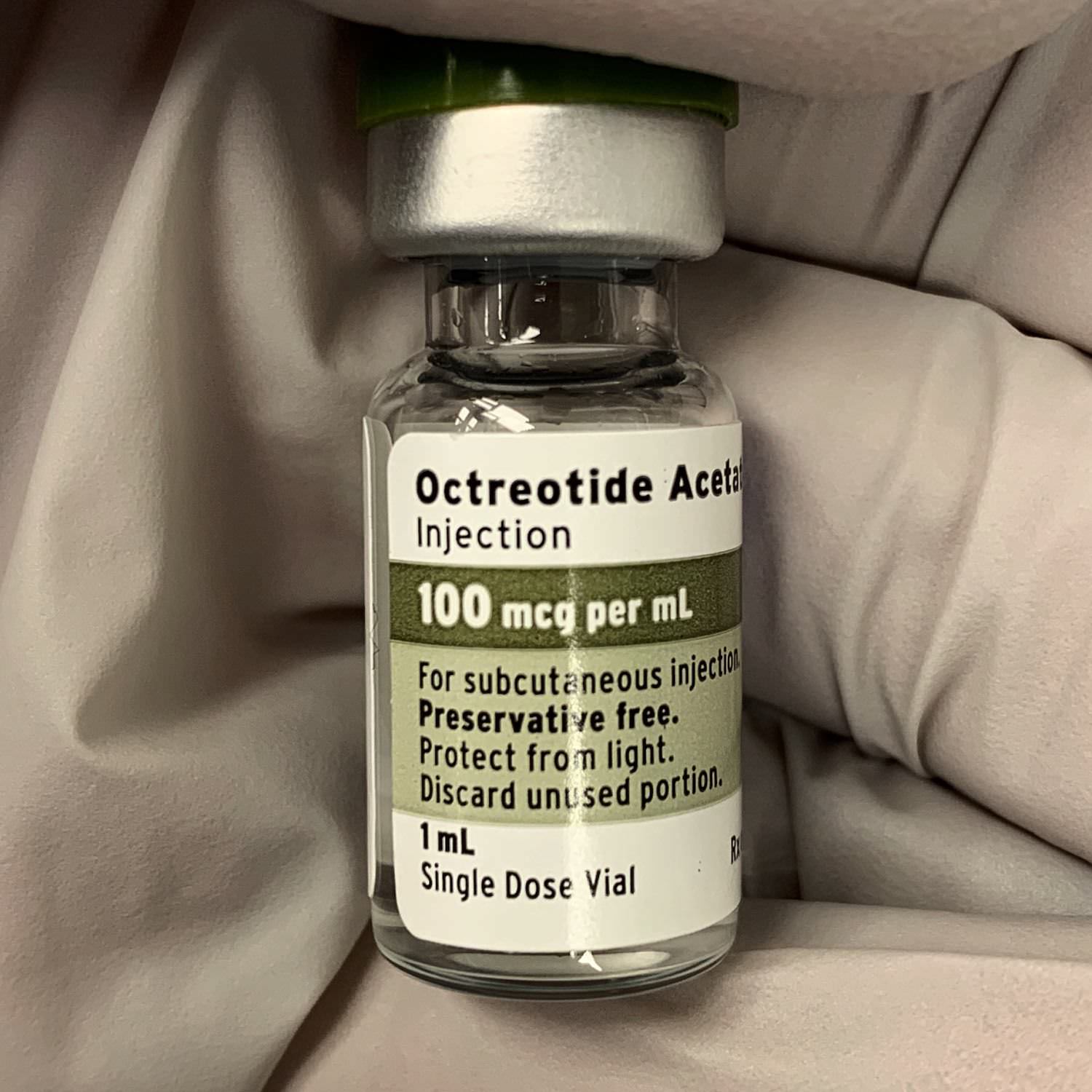Sandostatin (octreotide) is a subcutaneous, intramuscular, or intravenous analog to somatostatin – a protein hormone secreted throughout the GI tract – which acts via G-protein coupled receptors to inhibit a myriad of other hormones. For example, in the central nervous system, it suppresses the release of prolactin, thyroid stimulating hormone, and growth hormone via the hypothalamus-pituitary network. In the periphery, octreotide inhibits the release of insulin, glucagon, and the exocrine function of the pancreas.
Clinically, I’ve used octreotide a handful of times in the operating room and ICU settings to mitigate the effects of symptomatic carcinoid syndrome (flushing, diarrhea, increased airway reactivity, etc. due to a paraneoplastic release of excess serotonin). It’s also used to reduce the levels of growth hormone and insulin-like growth factor 1 for patients with acromegaly refractory to conventional treatments (surgical resection, radiation, bromocriptine). I have colleagues who also use it to control variceal bleeding.
Overall, it’s not a drug I administer often, but from a physiologic standpoint, it spans so many important endocrine domains that it’s worth knowing!
Drop me a comment below with questions! 🙂







Purpose of using this drug in the presence of GI fistulas?
As far as I know, the evidence doesn’t show improvement in fistula closure rates or time till closure. However, I think there’s some evidence that supports octreotide reducing OUTPUT from fistulas.